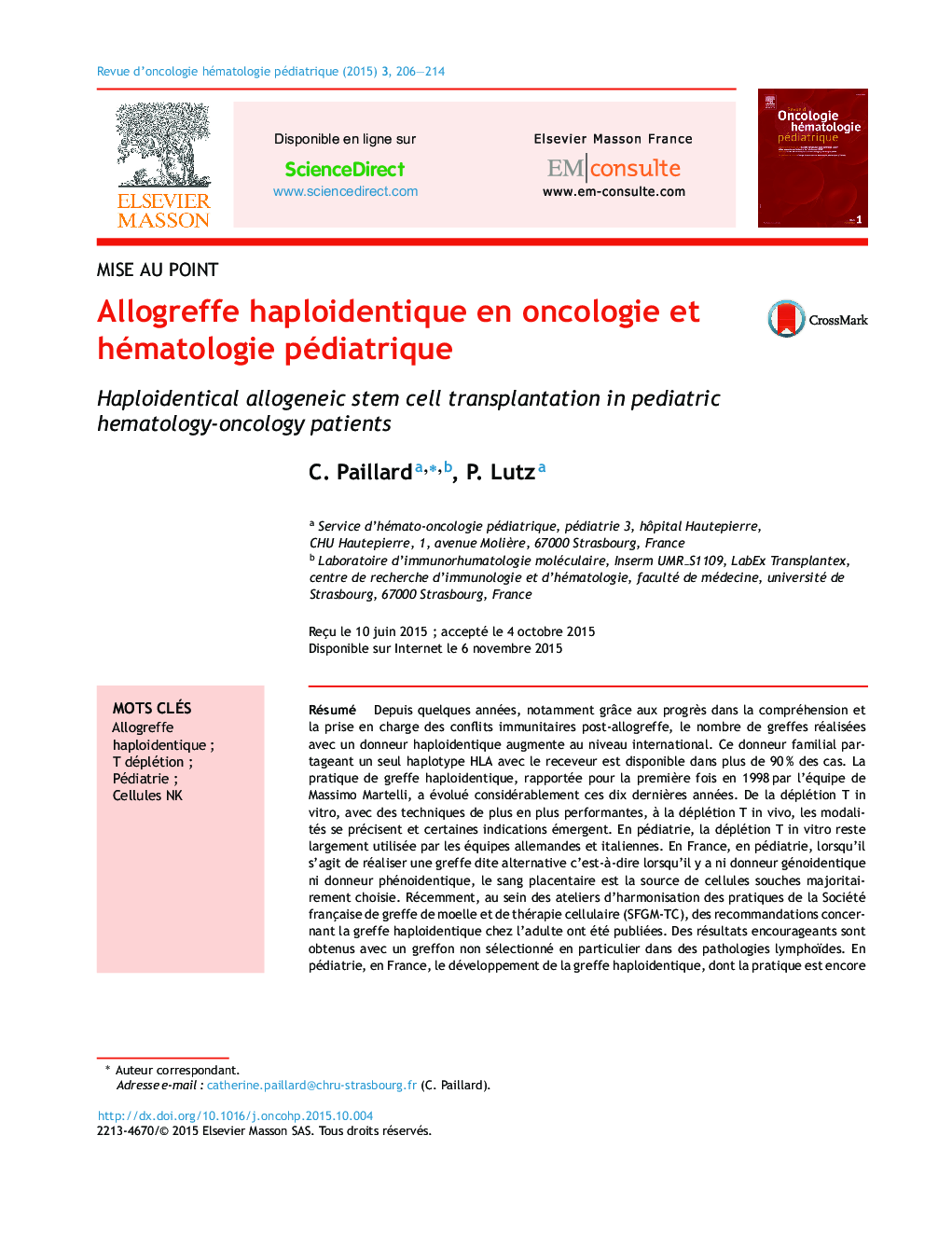| Article ID | Journal | Published Year | Pages | File Type |
|---|---|---|---|---|
| 3333228 | Revue d'Oncologie Hématologie Pédiatrique | 2015 | 9 Pages |
Abstract
In the past decade, haploidentical allogeneic stem cell transplantation has considerably increased due to recent insights into the biology of immunological conflicts after transplantation. The possibility to use a familial donor sharing only one haplotype with the recipient allows having a donor in more than 90Â % of cases. Since the first report in 1998Â by Aversa, specific strategies of conditioning regimens and T-cell depletion have been developed. From in vitro T depletion, that progresses regularly, to the in vivo depletion, several pediatric German and Italian groups have developed alternative program for haploidentical transplantation with promising results. In France, this practice is still poor and cord blood transplant remains the preferred option in “alternative” transplantation, when there is no satisfying matched related or unrelated donor. Many groups have developed alternative programs with T cell repleted haploidentical donor transplantation, obtaining encouraging results in either haematological malignancies particularly in lymphoid adult malignancies or in some non malignant disorders. In the attempt to harmonize clinical practices between different adult French centers, the French Society of Bone Marrow Transplantation and Cell Therapies (SFGM-TC) has published some recommendations. Further research and prospective protocols are necessary to validate the use of this approach in children. In this review, we provide an overview of the recent evolution of practices and analyze data produced by different groups, highlighting their principal characteristics.
Keywords
Related Topics
Life Sciences
Immunology and Microbiology
Immunology
Authors
C. Paillard, P. Lutz,
